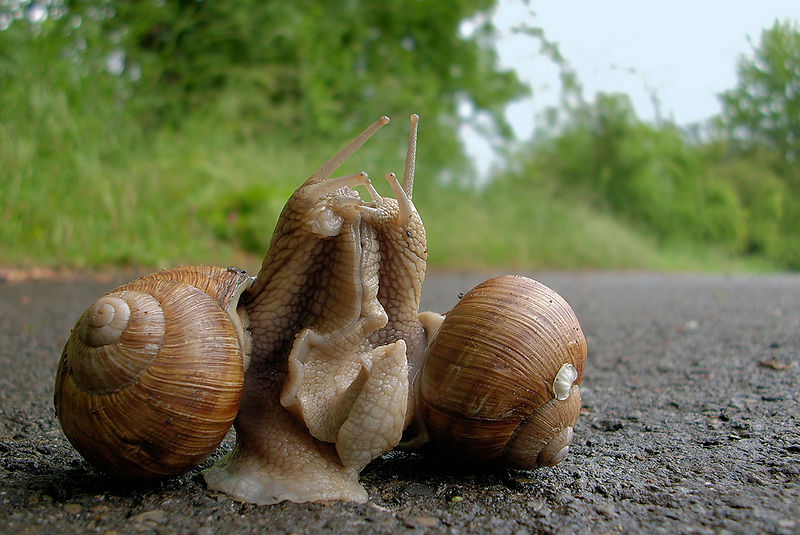
Reproduction
Would you be a female or male... why not both!?
All polygyrid gastropods are hermaphrodites, which mean the snails have both male and female reproductive organs (Emberton, 1993). The male penis is everted and more than twice the length of its body (Emberton, 1993). Sperm is transferred to the female’s seminal receptacle and then taken into the gametolytic gland where the eggs are produced (Emberton, 1993). This is how snails reproduce internally, but polygyrids can also perform external sperm exchange (Emberton, 1993). External sperm exchange is said to be an adaptation that helps to limit the female’s choice (Emberton, 1993).
 All
of these reproductive organs experience changes during the
seasons. As the seasons change, the organs are limited and are
not ready for reproduction (Emberton,
1993). Land snails begin their reproductive
process in the early months of summer, May or June usually, when
the weather is warm (Binney, 1885).
To protect its' eggs from predators, the snail uses its head to
dig a hole up to four inches deep in the soil (Binney,
1885).
Aside from protection, the eggs need a moist environment
away from the sun (Binney, 1885).
Throughout the summer months, a snail will make three or four
deposits of thirty to fifty eggs (Binney,
1885).
These eggs are a globular with a white color (Binney,1885).
Their external membrane is made up of a semi calcareous
substance that is flexible whereas their internal membrane is
composed of tiny carbonate lime crystals (Binney,
1885).
The snail eggs hatch
after about thirty days unless it’s too close to winter, which
then it will wait until next spring
All
of these reproductive organs experience changes during the
seasons. As the seasons change, the organs are limited and are
not ready for reproduction (Emberton,
1993). Land snails begin their reproductive
process in the early months of summer, May or June usually, when
the weather is warm (Binney, 1885).
To protect its' eggs from predators, the snail uses its head to
dig a hole up to four inches deep in the soil (Binney,
1885).
Aside from protection, the eggs need a moist environment
away from the sun (Binney, 1885).
Throughout the summer months, a snail will make three or four
deposits of thirty to fifty eggs (Binney,
1885).
These eggs are a globular with a white color (Binney,1885).
Their external membrane is made up of a semi calcareous
substance that is flexible whereas their internal membrane is
composed of tiny carbonate lime crystals (Binney,
1885).
The snail eggs hatch
after about thirty days unless it’s too close to winter, which
then it will wait until next spring